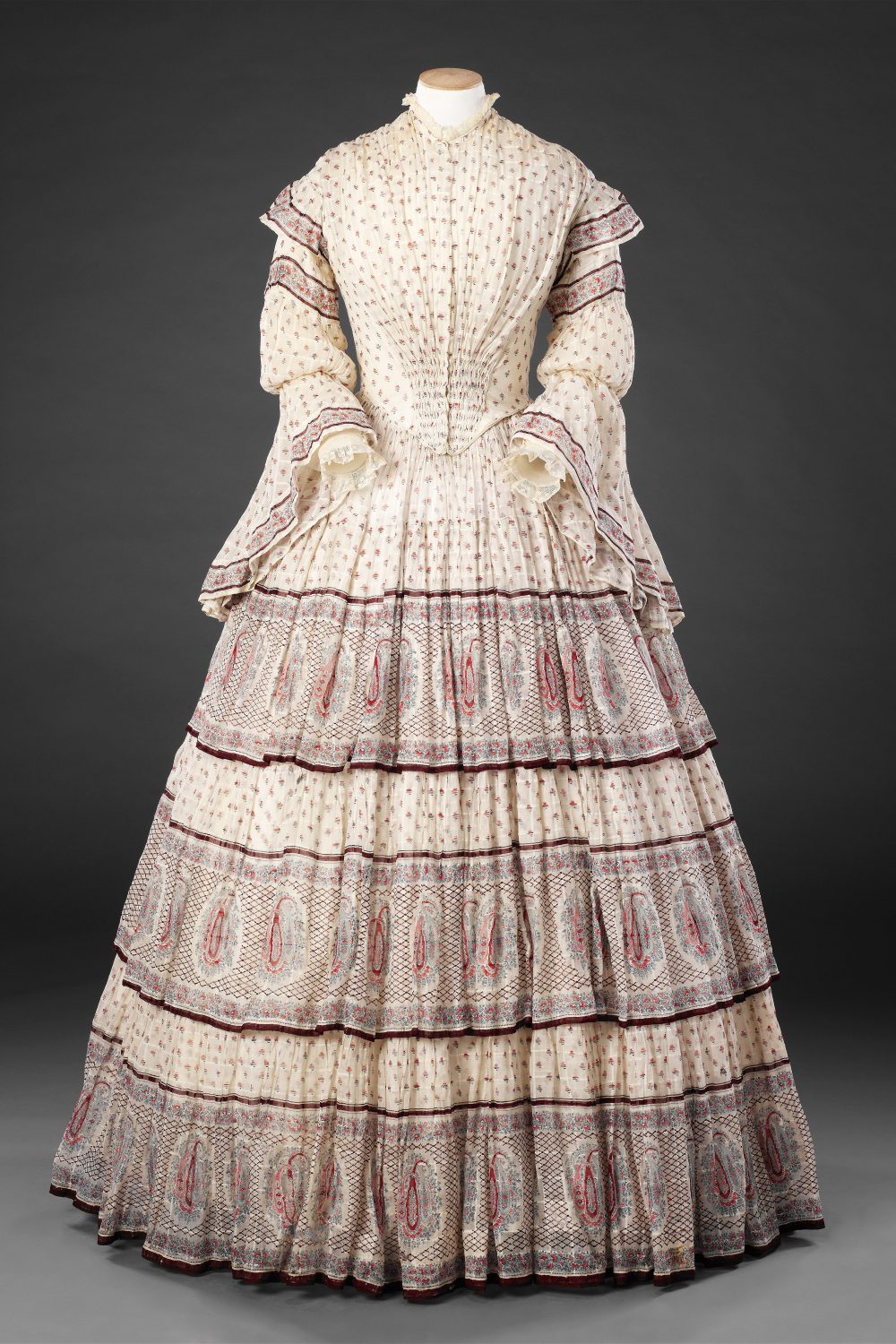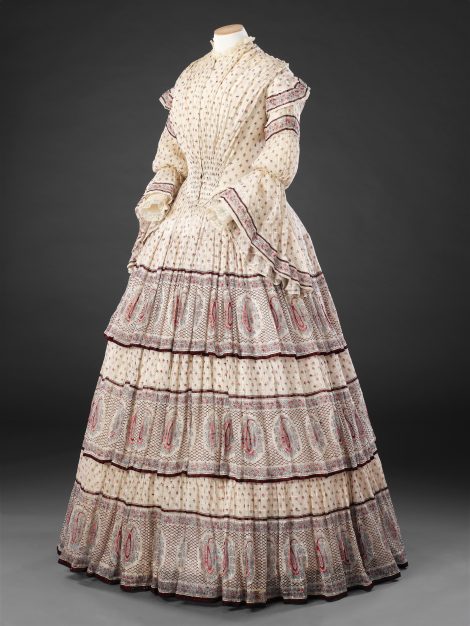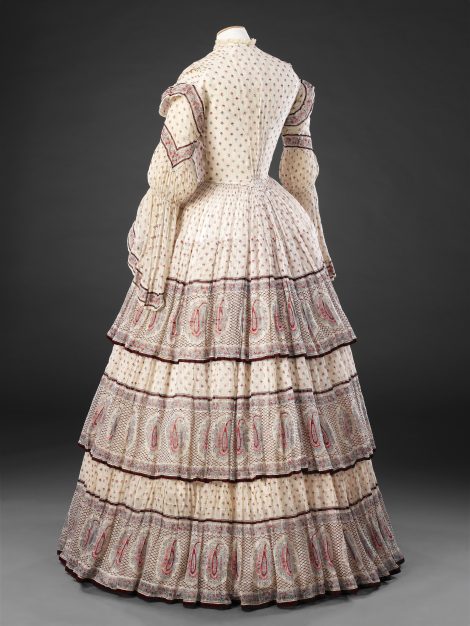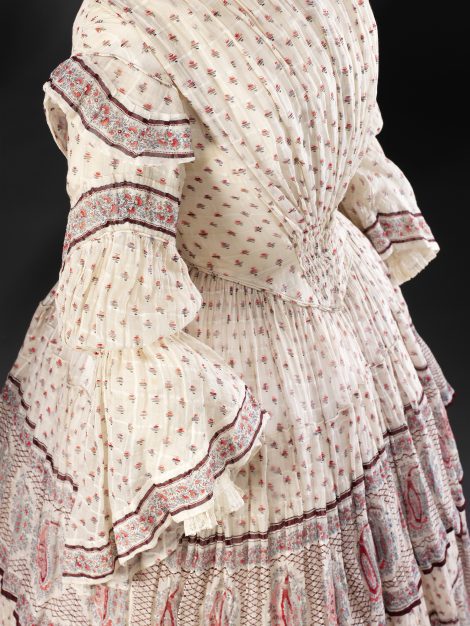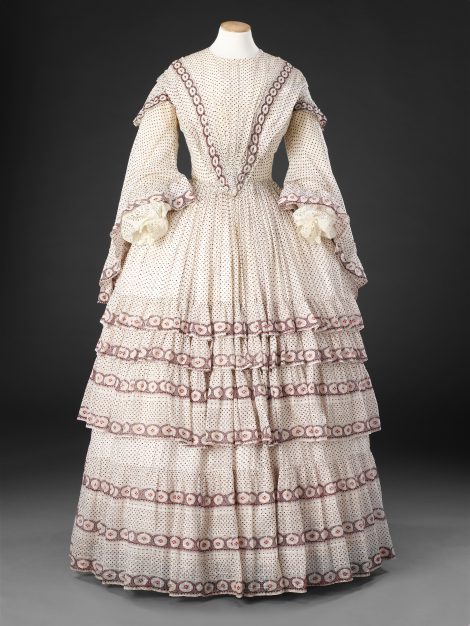This is a classic example of a summer day dress of the period with its loose flared sleeves and full flounced skirt held out into a dome shape by a crinoline frame or a number of petticoats beneath. It is made of translucent white muslin woven with a chequered ground of denser threads (a popular effect in printed muslins from the mid 1820s) and printed, probably in Scotland where there was a thriving printed muslin industry, with a delicately coloured design that reflected the influence of popular shawls inspired by those originally woven in Kashmir.
Three different, but related, designs have been used for the dress: a ground pattern of tiny abstract motifs, diagonally repeated, that recall the ‘spade’ motifs of early Kashmir shawls; bands of a simple floral pattern bordered in dark brown used on the sleeves; and deep skirt flounces incorporating both, together with elongated cone motifs within a brown diagonal trellis. The stepped angularity of all these designs is a vestige of the twill tapestry technique of the original shawls. By the 1850s it had become technically possible to print designs unevenly distributed across the width of the fabric, with the denser pattern on one side, which was ideal for these bordered skirt flounces; in addition, the design could be printed in long lengths of fabric allowing for generous fullness in the skirt. Although the lower flounce has been joined, one of its pieces measures 1.5 metres across, longer than the typical fabric width would have permitted.
